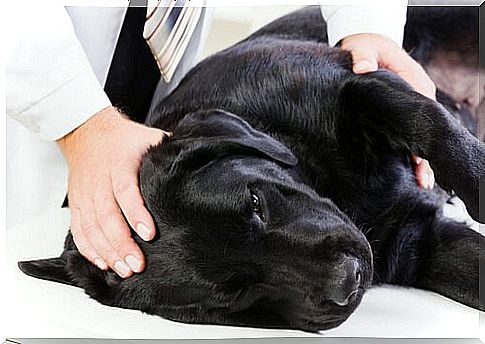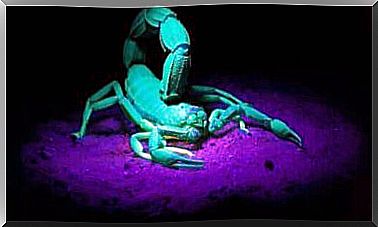Epilepsy In Dogs: Symptoms And Possible Solutions

Epilepsy in dogs is one of the most distressing health problems for owners because they don’t know how to behave or what to do during this type of seizure.
On the one hand, there is the problem of intervening in a timely and adequate manner. On the other, the fear of hurting the animal and the fear that the situation could get complicated. Not everyone, however, has a cool head and the ability to act in such dramatic circumstances.
To try to help you with this, we have decided to devote an entire article to the subject. Not only will we tell you everything there is to know about epilepsy in dogs . We will also explain what an attack looks like and any treatments for the disease.
Epilepsy in dogs: what is it?
If a dog suffers from significant and repeated attacks over time, it is evidently suffering from epilepsy. Although these seizures can appear for several reasons, they fall into the clinical picture of epilepsy in dogs when the episodes become periodic.
When the electrical activity of the brain is abnormal, the neurons “go crazy” and cause local or general spasms. However, this is not related to the movements of the animal, as there are even cases where the dog has a seizure when sleeping or resting.
Furthermore, the causes of epilepsy in dogs can be varied. From a brain tumor to congenital malformations, hereditary issues or even the accidental ingestion of insecticides.
Each case will be treated separately and the opinion of your trusted veterinarian is always essential.
There are also cases of epilepsy due to alterations in the composition of the blood or due to the increased concentration of sodium or potassium electrolytes in the body.
All this leads to an increase in the excitation of neurons.

Epilepsy in dogs step by step
Seizures in dogs appear without warning. They can last a maximum of a minute and a half although, obviously, to you owners this time will seem infinitely longer. Also, the animal will look really exhausted, as if it has been exercising for hours.
The intensity of the attacks will depend on the affected area of the brain: there may be generalized or partial (called “focal”) convulsions.
There are generally three stages of epilepsy in dogs. Let’s see them in detail:
1. Initial stage
Also known as aura or prodrome , in this phase the pet changes behavior, appears particularly nervous, uncomfortable and different than usual.
He can call attention all the time, barking for no reason, does not check the urethra or appears disoriented.
In time, thanks to these symptoms, you will know that your four-legged friend is about to have a seizure of epilepsy.
You will be able to prepare yourself: for example, it is a good idea to remove any objects with which the dog could injure himself, during the next phase, that of the convulsions.
2. Phase of convulsions
The actual epilepsy attack in dogs materializes at this point. The animal will move frantically and fall sideways to the ground.
The well-known muscle contractions (such as tremor), involuntary movements of the limbs, groans, howls will appear .
Abundant saliva production, open eyes and ‘blank’ gaze are symptoms that can be accompanied by a lack of control over physiological activities.
This is the critical stage in which epilepsy manifests itself with the greatest force. It is very important to know that the animal is unaware of everything it is doing at that moment and that it can easily injure itself with furniture or other objects.
Prepare a blanket or mattress to make it “fall”, perhaps in a protected area of the house. First of all, you have to stay calm.
3. Final stage
Once the attack wears off, the dog will stay a while without moving or will do it repeatedly but more slowly (as if dreaming).
He will feel confused, restless, disoriented and will not respond when you call him by name.
He could get up off the ground, but he would trip over everything. At this stage it is very important to leave him alone, offer him a bowl with fresh water and a blanket to let him rest.
Your little dog will need nothing else. Keep the environment quiet and well ventilated.

Can epilepsy in dogs be cured?
It is necessary to know that epilepsy in dogs is chronic and permanent. This means that there are no treatments to cure it.
Being mostly a hereditary problem and affecting the brain, medical and scientific progress in this regard is very limited.
What you can do is reduce the stress of the animal to avoid new episodes or slow them down as much as possible. How?
Through alternative homeopathy therapies, reiki treatments or even acupuncture, always turning to a professional.
As the owner of a dog suffering from epilepsy, you need to be good at always being ready.
Prepare a special area, without objects or obstacles and, when the convulsions occur, always remain calm. Always keep the phone number of the veterinary clinic nearby and, in case of complications, contact your pet’s doctor immediately.









